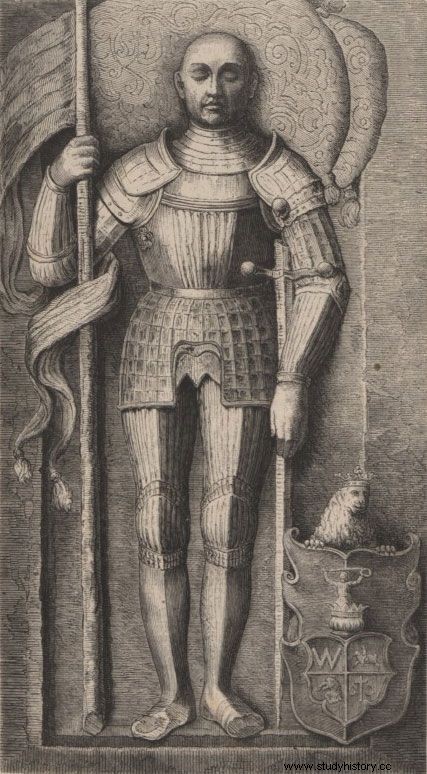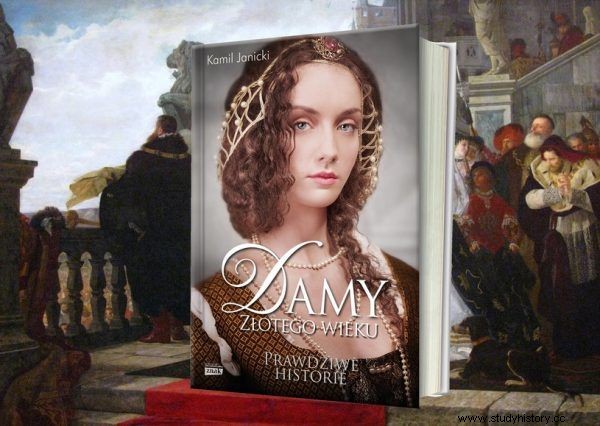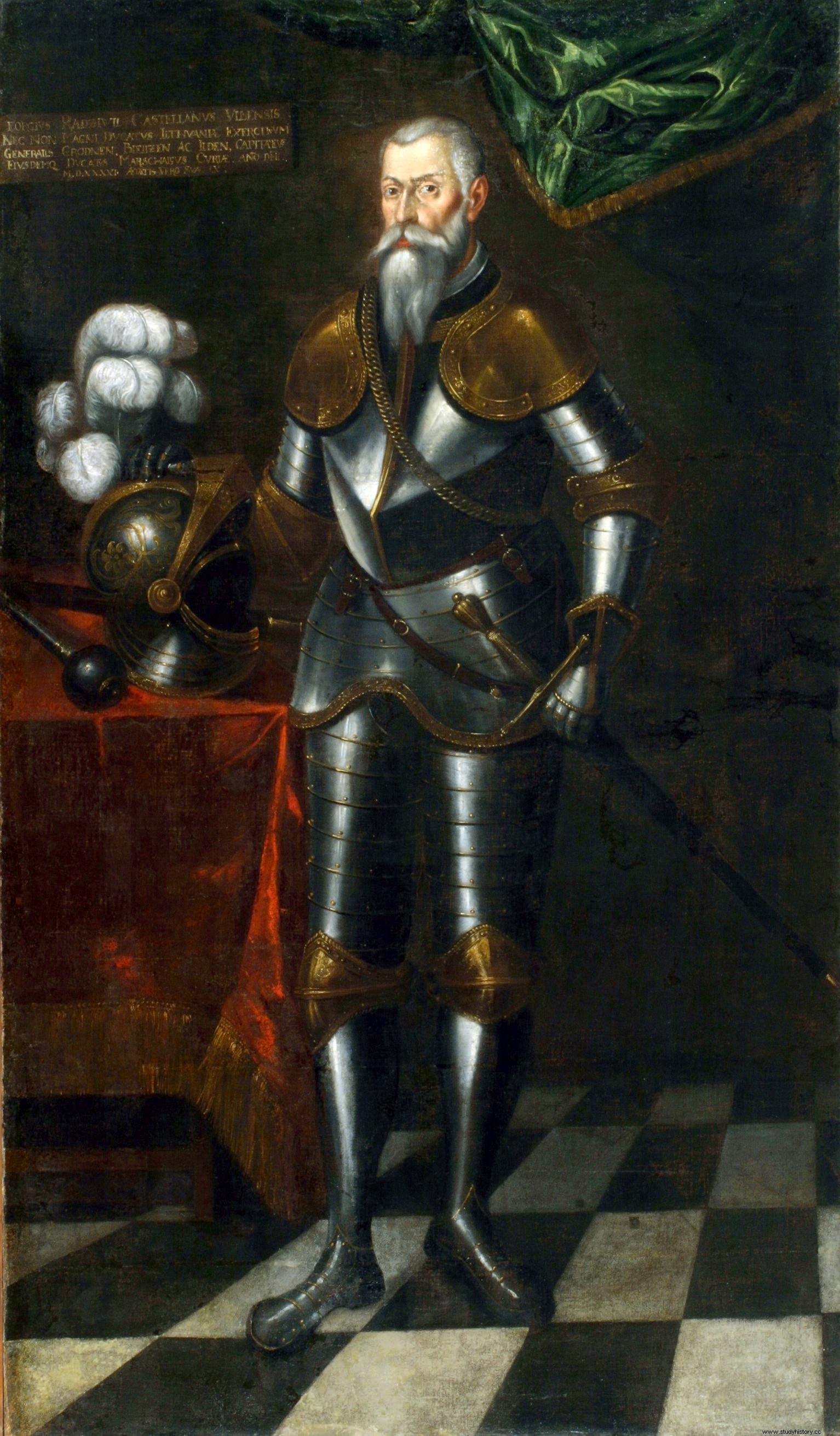Untamed ambition, the court of competing families. The attempts of the queen who dreams of subjugating the Lithuanian elite. And a marriage that would change the fate of the country. What is worth knowing about the relationship between Barbara Radziwiłłówna and Stanisław Gasztold?
If you don't know what's going on, it must be money. Certainly, this was what Olbracht Gasztołd and Jerzy Radziwiłł meant when in 1530 they concluded a strict alliance between their families. At first glance, it was an entirely unthinkable alliance. An absurd joke on the map of Lithuanian politics in which nothing was right.
The Gasztołd family were in a class of their own. The family already deserved in the times of Władysław Jagiełło, boasting ancient traditions and enjoying respectable respect. In terms of influence, they were second only to the ruling Jagiellonians. They have long surpassed them in wealth.
Against this background, the Radziwiłłs were extremely poor. They were ordinary upstarts. Boyars without their own history, without great ancestors, and until recently - even without a name, coined only at the end of the 15th century. They were powerful, but in a way that was disrespectful. They built their strength on the brutal oppression of their subjects, on rapes, attacks and terror. In many ways, they still looked more like bandits than magnates. They had fun in primitive entertainment, they gained fame only in wars, and in politics they saw mainly another tool of deception and exploitation. They drove the peasants into poverty, just to strip their last penny. They were not afraid to send troops to the rebellious farmers; they kept their nobility in constant fear. They beat and tugged the boyars by the beards, instead of winning them over with offices and rewards.

Image of Olbracht Gasztold drawn after his tombstone
In fact, they began to civilize only in the times of the aforementioned Jerzy Radziwiłł - the Grand Hetman of Lithuania, an outstanding commander, slayer of the Teutonic Knights, Muscovites and Tatars, and the court marshal of Lithuania. During his lifetime, the family's estates included almost thirteen thousand households and seventy thousand serfs. Jerzy Radziwiłł alone was the owner of thirty-one manors and palaces, where over two thousand servants worked, ready at his beck and call. Such enormous wealth, such a great entourage and mass of people could not be kept in check in the long run solely on the basis of tyranny. Changes had to come. However, they would not be so quick and radical if it were not for one woman.
Accelerated Realpolitik rate
The Radziwiłłs - greedy, eternally insatiable and demanding more and more new estates and treasures - suddenly began to lose their influence. Queen Bona Sforza took them in their sights while carrying out her grand scheme of regaining royal property. Trials, controls and seizures broke down. Jerzy Radziwiłł tried to react in known ways. He ordered the queen's officials to be beaten and had documents confirming the ownership of the disputed lands forged. The effects were catastrophic. He was losing not only lands, but also offices and privileges.
The clash with the mighty Italian woman - who was brilliant in the art of deception like no one, and who had the entire state apparatus for her use - became for Radziwiłł an accelerated course of the modern Realpolitik . And paradoxically, when the dust of battle settled, it turned out that he gained more than he lost. Bona wanted to bring down the colossus on clay legs, but it was counterproductive. As powerful, but not very sophisticated adventurers, the Radziwiłłs may have been a tiring obstacle, but they were not dangerous. Now that they started hijacking Bona's methods, her own way of thinking and acting, they have become a real threat. In fact, she created them.

Without Bona, there would be no Radziwiłł known from history textbooks. Ruthless, cunning, always putting the interests of the family over the interests of the state and leaving their mark on the fate of Poland for the next centuries. She also convinced Jerzy Radziwiłł that in order to achieve the goal one should fraternize even with the greatest enemy. For example with Gasztołd.
Political union at the fathers request
There was no shortage of bad blood between the two families. Years ago, Radziwiłł's father led to the arrest and imprisonment of Olbracht Gasztold for one year for participating in an anti-state conspiracy. Gasztołd, on his part to the left and right, spread the word that in the times of Jagiełło and Witold, the entire immovable property of the Radziwiłł family consisted of twenty peasants. And that they still had rude manners from that period. There were also irritations completely fresh. In 1530, Jerzy Radziwiłł seized and burnt the Gasztołd castle in Tykocin. And yet in the same year the families reconciled - and built a united front against Bona.
A new triumvirate of two Radziwiłł and Gasztold began to rule in Lithuania. "Screams and groans have risen to the heavens" since "the three have seized all power in their hands," said a source at the time. The alliance turned out to be so beneficial to both sides that after a few years it was decided to supplement it with a blood pact. In order to ultimately thwart the plans of the powerful queen, Jerzy Radziwiłł married his daughter to the only son of Olbracht Gasztold.
The bride was named Barbara and she was seventeen (I have already written more about her youth and education in our article) . In turn, the groom, Stanisław Gasztołd, was a thirty-year-old and spent his entire life in the shadow of his overbearing father.

Jerzy Radziwiłł, Barbara Radziwiłłówna's father.
His career path was mapped out even before he reached the age of majority. When Olbracht Gasztołd was an ally of Bona, he obtained for him the lucrative office of the Nowogródek voivode. The boy was only fifteen years old, but the queen did not mind - it counted that in return she guaranteed her own son, Sigismund Augustus, a cowshed for the Grand Duke of Lithuania. It hadn't even occurred to her that the gifted tycoons would soon become her greatest enemies.
The wedding took place with great pomp on May 18, 1537. Barbara received a wonderful dowry and an impressive setting. She fulfilled her role, so my father-in-law and father quickly stopped thinking about her. They no longer had time to see how badly things were going. Olbracht Gasztołd died in 1539 at the age of sixty-nine. Jerzy Radziwiłł was eight years younger when he passed away in 1541. Barbara and Stanisław were left alone on the huge Gasztołtów estate, while their marriage turned out to be a complete misunderstanding. They did not find a common language. Nothing sparked between them, or perhaps even had a chance to spark. The voivode of Nowogródek - promoted shortly after his father's death to the voivode of Trakai - preferred to deal with politics instead of his wife. No child was born from their relationship, but as they were both young, no one raised the topic loudly. And then the catastrophe happened.
Stanisław Gasztołd died suddenly in 1542. He wasn't even thirty-five. The family that had been shaking Lithuania for several hundred years ceased to exist. The rudder of the Radziwiłł family allied with him passed into the hands of the young, inexperienced generation. The country was plunging into inevitable chaos. As if that were not enough, the news broke that the king was going to Lithuania - the young, but already crowned heir to his father, Sigismund Augustus.
Source:
You can learn more about the confusing history of the Radziwiłł family in Kamil Janicki's book Ladies of the golden age (Horizon Label 2014). The article is based on the literature and materials collected by the author during the work on the book. You can buy it at a discount in our bookstore.
